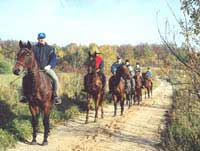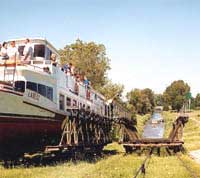
ELBLĄG UPLAND |
| Landscape Park Elbląg Upland |
|
|
|
Where a mighty oak tells of olden days ... |
|
| Forests, meadows, natural and artificial watercourses shape the beautiful landscape of the Elbląg Upland. It contrasts sharply with the neighbouring lowland plains. In the ravines on the edge of the plateau, you can find a particularly rich variety of plants, including rare orchids. The curious growth forms of the often very old, gnarled trees in the beech and oak forests stimulate your imagination as you walk. And from the paths, you can observe an abundant animal world. Various peoples from different settlement eras influenced the Elbląg Upland over the centuries. The oldest traces of human settlement go back to 9000 B.C. Romans, Vikings, Slavs and Prussians later left their mark. The burial grounds of the Mennonites, Dutch colonists who immigrated here in the 16th century, can still be seen. The Mennonites built unique wooden arcade houses as well as courts in the Dutch style. An old oak in Kadyny could tell of the region’s heyday at the end of the 19th century, when this spot was the preferred summer residence of the German Emperor William II. A trip on the Elbląg canal is a very special experience. Built by Prussian engineers, it is now preserved as a monument of hydraulic engineering. The complicated system of locks and land rail tracks is impressive. The ships were pulled by trolleys over these tracks, and were thus able to overcome a difference in water-level of over 100 metres. Another rewarding way to explore the park is by using the European cycle trail E9, which runs from Elbląg to Frombork, via Kadyny and Tolkmicko. Among the highlights of your stay in the Elbląg Upland could be a visit to the Copernicus observatory in Frombork or a ferry trip to Kaliningrad. You can get detailed information about sights and excursions in the tourist information office in Elbląg and at the Intermunicipal Union of lagoon shore communities. |
   |
| Source (modified): Folder "Ecotourism around the Vistula and Curonian Lagoons" | |
|
|
|
![]() 2002 by Mark Herrmann - berlin@bte-tourismus.de - Imprint
2002 by Mark Herrmann - berlin@bte-tourismus.de - Imprint